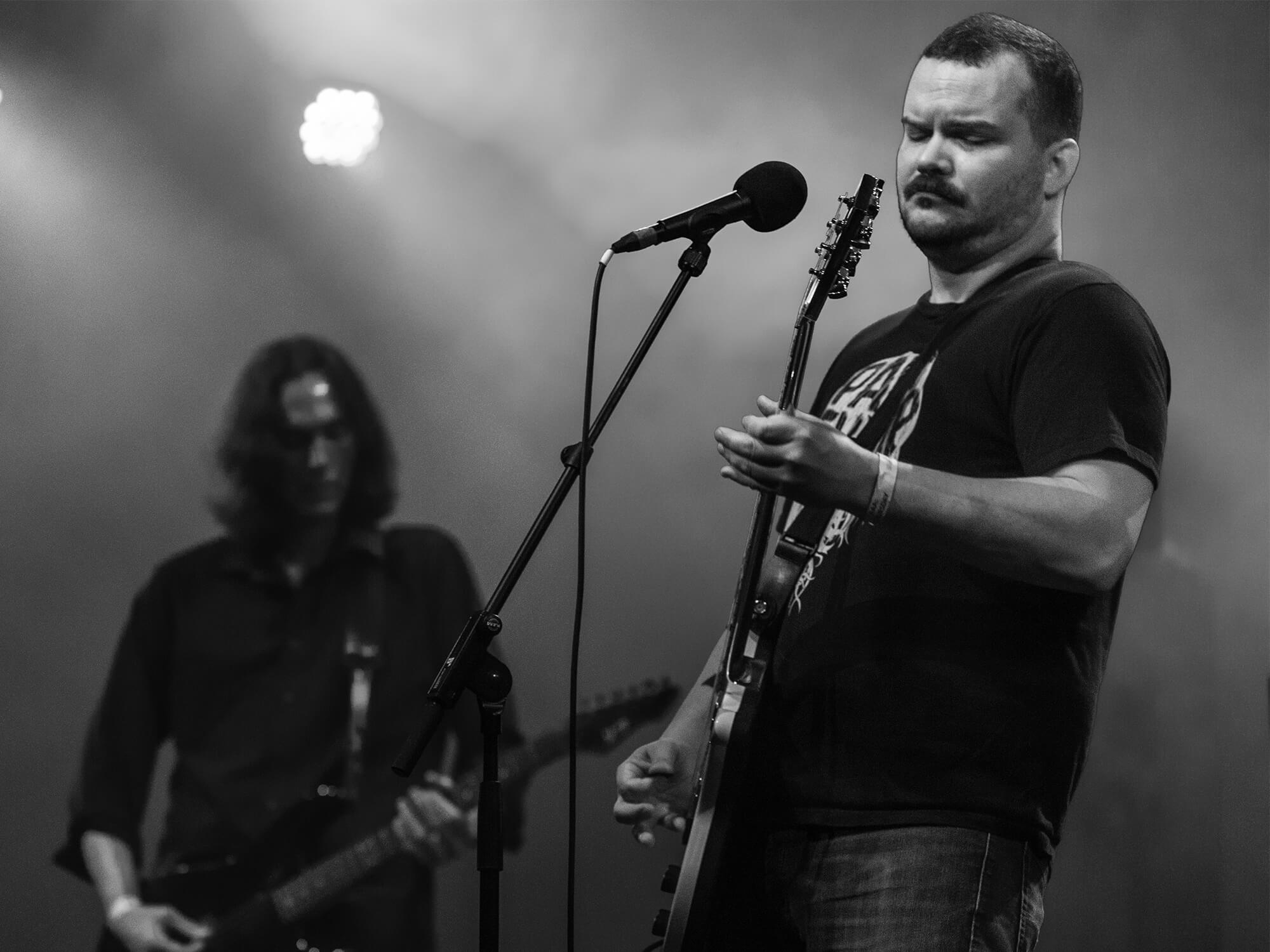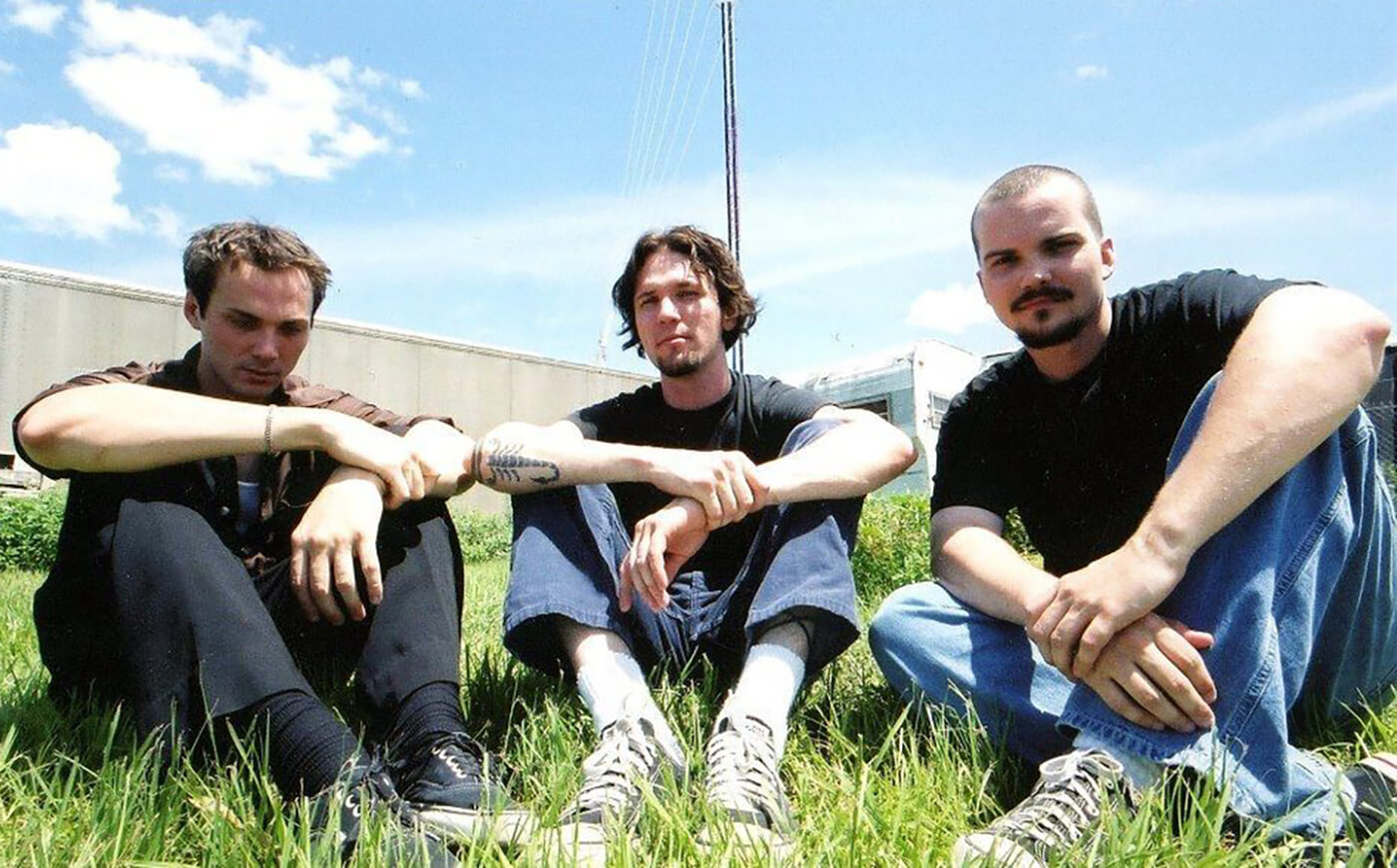Related Tags
The Genius of… Self-titled by Floor
What the hell is doom-pop, anyway?

Floor at Roadburn Festival in 2015. Image: Grwynn
Time for a bit of reader participation. First: take a second to clear your mind of unfunny djent memes, as well as any sensible conversations about scale-length, string gauge and intonation. Both of these things will hinder the journey ahead. Next: head to the unassuming Spotify page for Floor, and stick on their most popular track: Scimitar. Listen carefully to what happens 44 seconds into the song. If your speakers are set up right, your internal organs should now all have swapped places. It’s time to celebrate the joy of Floor’s ‘bomb string’, and their excellent self-titled debut LP.

Formed in Miami in 1992 by guitarists Steve Brooks and Anthony Vialon, Floor went through rhythm sections for a few years until settling on a more steady trio lineup with Henry Wilson on drums. They’d churn out singles, break up, reform and eventually manage to release their debut self-titled record in 2002 before disbanding again a year later. It’s here Floor’s history gets a little overshadowed by Steve Brooks’ other project Torche – but they did manage to reform (again) and release the also-great Oblation in 2014.
Given, though, their near-constant output of demos and singles before their debut, it’s safe to say that their self-titled record is more of an exploratory slice of a larger idea, a showcase of the core thing the band is about: sludge-pop, or doom-pop. In either case, it’s: what if Eyehategod had pop hooks? What if Electric Wizard were capable of writing in a major key? What if you gave R.E.M. a guitar tuned to double-drop-A and a pile of distortion pedals?
It might seem like an eye-rollingly overwrought idea, the kind of thing that the YouTube algorithm will suggest to you after one too many Jared Dines videos. But a band that stuck at it throughout the 1990s is one borne out of a decade where plenty of heavy guitars conjured real, bonafide pop hooks. If Nirvana, who were explicitly inspired by the fucking Melvins, can reach stratospheric radioplay success, why not explore that avenue further?
And Floor do not approach the sound with a lack of conviction: these are not pop vocals bolted onto heavy riffs without regard. There is a constant, playful push-pull between the hooky, major-key vocals and the pummelling, driving guitars of Brooks and Vialon. Riffs make room for the major-key vocal framing by being harmonically sparse, often just hammering away at single-note lines until that all-important bomb string drives a truck through the soundstage.
Another weird result of Floor’s particular musical alchemy is the shortness of all of their songs: in chasing extremity, sludgy bands can protract songs out to ten minutes plus. Not here, indicating that the true driving force is not the same as that of straight ahead sludge bands, instead the verse-chorus immediacy actually allows the hooks to work as hooks, rather than just vocal lines that happen to be major.
The back-and-forth tension between the onslaught of heaviness and catchy fun is played with lyrically, too. It’s all well and good hearing an earworm line about romantic longing, until you realise that the song is called Tales Of Lolita and the lyric is: “I don’t want to wait / until you’re old enough” – suddenly putting those pieces together is just as arresting as that bomb string creating a distorted explosion. Speaking of – let’s examine what that ‘bomb string’ really is, shall we?

The bomb string
The main question is: what’s it tuned to? Well, it kind of… isn’t. Speaking to Exclaim ahead of the release of Oblation, Anthony Vialon explained how Floor’s tuning works: “There’s the bomb string, the one E string that’s not really tuned, it just kind of hangs there. And then there’s two more E strings, which are both tuned to a low A, and then the high strings, which we really don’t use that often, but they’re E, B, E. It’s really just the three E strings, one bomb and two As.”
This approach to tuning a guitar, as completely bizarre as it is, is an interesting way to reframe the instrument – the double low-As clearly inform those sparse, single-note-line riffs, as there’s not really room for complicated chords – nor would they in a million years intonate properly. Hence, those oh-so-catchy vocals have so much room to manoeuvre in the harmonic space.
The absurdly low, low, low low-E, then, becomes a sound effect as much as a note: you can hear it try to be a discrete frequency as the pick attack introduces enough tension to bend it into some sort of tuning, but then it collapses again into a distorted rumble. Given how tightly-structured and hooky the songs surrounding its use are, the result is like listening to 1990s chart radio mixes as someone occasionally fires a shotgun into the air.
A lot of hay is made in the heaviness discussion about dynamics: it’s well accepted that having some room to breathe will give a reference point to make all the blastbeats, the tremolo picking and the screaming that much more impactful. Floor take that discussion and turn it sideways: it still applies here, but what’s defined as breathing room and its inverse are unlike any other quote-unquote heavy band.
It’s undeniable that Floor’s time together formed the blueprint for Torche, who also brought tight, accessible songwriting to a similar sludge-doom sound. But the singular weirdness of Floor’s central conceit, and the skill with which it is pulled off on their self-titled, is its own discrete thing, one that deserves to stand on its own as a monument to making extreme guitar music that’s actually fun to listen to.
Floor’s self-titled record is available, with some bonus tracks, on streaming as part of Robotic Empire’s giant 2010 boxset – this collected basically all their recorded material up until that point, including never-released LPs made up of singles and demos. Even though 2014’s Oblation is perhaps more polished, the self-titled LP remains the place to start. Get your ears round Scimitar and you may well find yourself mainlining the rest of Floor’s available tracks for the next month.
